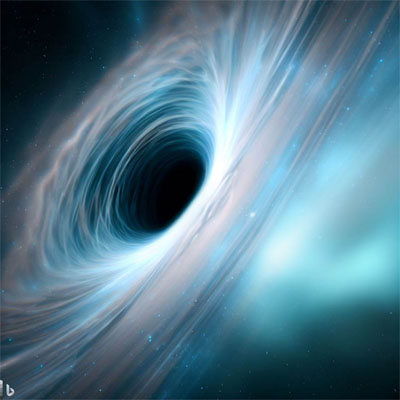A wormhole is a speculative concept in theoretical physics that suggests the existence of a shortcut or tunnel-like connection between two distant points in space-time. It is often depicted as a hypothetical “tunnel” that connects separate regions of the universe or even different universes. Wormholes are primarily discussed within the framework of general relativity, which is Einstein’s theory of gravity.
According to general relativity, wormholes could theoretically emerge as a solution to the equations, but they require the existence of exotic matter with negative energy density to stabilize them. The energy requirements for creating and sustaining a wormhole are immense and currently beyond our technological capabilities.
Regarding their appearance on land, it is important to note that wormholes, as currently understood, are primarily discussed in the context of space-time, which encompasses the fabric of the universe. They are often portrayed as connecting distant points in space, not necessarily confined to a specific location like land. The hypothetical nature of wormholes makes it challenging to predict their exact behavior or limitations.
As for their appearance on land, it is important to understand that wormholes, as currently understood, are not confined to a specific location like land. They are typically depicted as connections in space-time, allowing for travel between distant points. However, their exact behavior and limitations are still not fully understood, given their hypothetical nature.
However, it is worth mentioning that wormholes remain largely speculative and have not been observed or confirmed to exist. While they are mathematically allowed within the framework of general relativity, their practicality and feasibility are still subjects of ongoing scientific research and debate.
In theoretical physics, wormholes are a consequence of the mathematics of general relativity, which describes the nature of gravity and space-time. According to general relativity, matter and energy can warp and curve space-time, creating what we perceive as gravity. Wormholes emerge as solutions to the equations of general relativity, suggesting the possibility of shortcuts or connections between different regions of space-time.
A wormhole can be visualized as a tunnel or conduit that connects two distant points, which may be within the same universe or even in different universes. This connection allows for a shortcut between these points, bypassing the usual distances required for travel in ordinary space-time.
However, the viability of wormholes comes with several significant challenges. The first major obstacle is the requirement for exotic matter with negative energy density. Negative energy density is a theoretical concept that remains hypothetical and has not been observed in nature. The negative energy is crucial to stabilize the wormhole and prevent its immediate collapse. The exact properties and behavior of exotic matter are still largely unknown, and its existence is purely speculative at this point.
Furthermore, even if exotic matter were to exist, the energy requirements for creating and sustaining a wormhole would be immense. The energy needed to keep the wormhole open and prevent it from collapsing would likely exceed anything currently within our technological capabilities.
It is crucial to note that while wormholes are mathematically allowed within the framework of general relativity, their practicality and feasibility are still subjects of ongoing scientific research and speculation. As of now, no definitive evidence or observations of wormholes exist. Scientists continue to explore these concepts and investigate potential avenues for their existence or practical utilization.
Hits: 108

